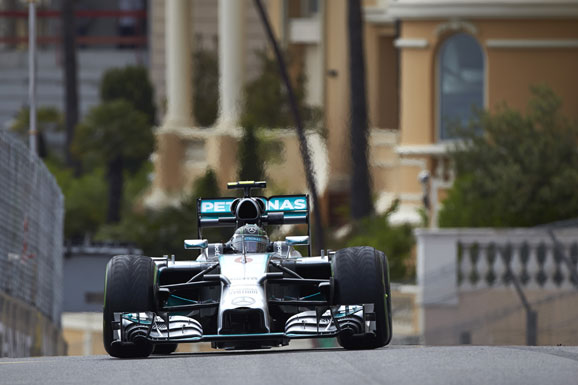2014 introduces what is widely recognised as the biggest technical revolution in Formula One season since its inaugural season in 1950. However, while probably the most far-reaching, this is far from being the first major upheaval in the history of the sport. For decades, engineers have been pushing the boundaries of performance, extracting the absolute maximum from the technology at their disposal and exploring every avenue of development in the pursuit of automotive perfection, only to have their creations cast into the annals of racing history. Increasingly complex regulations always force fresh innovations to suit constantly evolving sporting and technical requirements.
The revolution of 2014 has subtly different roots, with rules written to encourage rather than restrict new technology. As the automotive industry increasingly demands more from less, efficiency and hybrid technologies become all the more relevant. As the pinnacle of automotive technology and performance, Formula One has a significant role to play in driving these technologies forward.
In years gone by, the term efficiency may have appeared at odds with the ethos of Formula One: a conservative contrast to the ‘flat-out’ image of the sport. For 2014, however, that perception has changed fundamentally. Put simply, efficiency now equals performance. Where the power of a normally aspirated engine is defined by the amount of air that can be put through it, the performance of the all-new Turbocharged V6 Hybrid Power Unit is now defined by the amount of fuel available to each competitor. The driver who can extract the most performance from the available 100 kg of fuel energy – in other words, achieve the best conversion efficiency – will have a competitive advantage. The more efficiently the Power Unit can convert fuel energy into kinetic energy, the more that advantage will grow.
Of course, efficiency has long been a key area of development in Formula One. In years gone by, where fuel usage has not been limited, the advantage lay in weight saving. Put simply, the less fuel you carried, the lighter and faster the car: particularly at the start of the race. For 2014, however, the race fuel allowance has been fixed at a maximum of 100 kg, compared to a typical race fuel load of around 150 kg in 2013. To complete the same race distance at similar speeds, the Power Unit has had to become over 30% more efficient: a challenge which demands significant new technologies.
Part of the efficiency gain comes from the V6 Internal Combustion Engine (ICE): a smaller capacity ‘down-sized’ engine running at lower speeds than its predecessor. The power output and therefore efficiency is enhanced by turbocharging: allowing additional power to be extracted from the same quantity of fuel energy. The really clever part, though, comes in the form of the ERS Hybrid system. In 2014, there are up to seven possible energy journeys to re-use energy within the vehicle. The target: to achieve the same power output – around 750 hp – using around one third less fuel.
While areas of ‘familiar’ technology (bore size, crankshaft centre line, etc.) have been specified, technical freedom has been left in the areas likely to generate gains in overall efficiency. It’s a formula designed to encourage innovation in the pursuit and development of cutting-edge technologies that are ultimately relevant to the everyday motorist.
As always, weight is a key factor in performance. While the regulations stipulate a new maximum weight limit for the car of 691 kg – up from 642 kg in 2013 – this is now far more difficult to achieve. The Power Unit itself must have a minimum weight of 145 kg, while the additional cooling requirements of both the turbocharger and Hybrid systems only add to the challenge.
From an aerodynamic perspective too, innovation has been stretched to the limit. Fundamentally, there are two key elements to a fast Formula One car: having the most power possible to accelerate down the straight, plus good mechanical and aerodynamic performance to allow for quick cornering. The 2014 regulations bring with them a new set of challenges not only relating to the more visually obvious elements of the car, but more fundamentally in terms of packaging.
Hidden from view, the integration of the Power Unit and related systems into the chassis provides a significant aerodynamic challenge. The Power Unit itself takes a completely different shape to its predecessor, while more hybrid systems, a more complex exhaust system, plus an intercooler required for the pressure charging system are all contributing factors to the cooling requirements of the car. Managing heat is not only necessary in terms of car integrity but also performance and efficiency. Two opposing influences thereby exist: one focused on ensuring that each of these components operates within an optimal temperature range, the other on packaging the related cooling systems in such a way as not to detract from the aerodynamic efficiency of the car.
Overall, then, it is clear that Formula One in 2014 presents a fresh set of challenges to designers, engineers, drivers and spectators alike. As has been the case throughout generations of the sport, the introduction of new rules serves to encourage innovation and showcase Formula One as the cutting-edge of new technology: adding a level of intrigue which is relevant not only for the interest of spectators, but the automotive industry as a whole. As the latest phase of an evolutionary process that continues to position Formula One at the heart of contemporary technology, 2014 truly puts the ‘motor’ back into ‘motorsport’.

Leave a comment